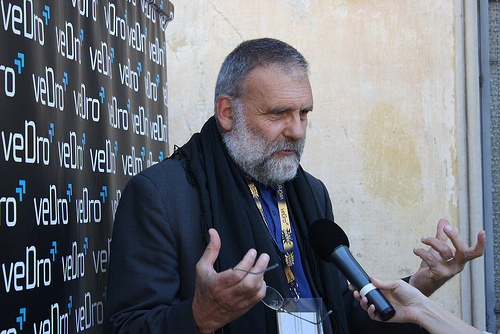
A report about violence against Syrian church leaders during the ongoing civil war shows that clerics have been beaten, abducted – five are still missing – and killed, and that 2013 was the worst year.
In ‘The Good Shepherd: A Report on Brutality against Christian Clerics in Syria March 25, 2011 – present’, the Assyrian Monitor for Human Rights documents the cases of 19 church leaders who were shot, beaten, abducted or murdered.
Two bishops who were kidnapped in February 2013, Michel Kayyal (Armenian Catholic) and Maher Mahfouz (Greek Orthodox), are still unaccounted for after their bus was stopped at a barricade manned by an unidentified armed group between Aleppo and Damascus, and the clerics were taken off.
In an attempt to free both priests, two other bishops were also abducted as they were travelling back after negotiations with the abductors. Yohanna Ibrahim and Boulos Yazigi, respective heads of the Syriac and Greek Orthodox Churches in Aleppo, were kidnapped near the Turkish border in April 2013. There has been no news about them ever since.
Another church leader still unaccounted for is Paolo Dall’Oglio, a Jesuit priest abducted in July 2013.
Among those killed in the last seven years were Fadi Jamil al-Haddad and Frans van der Lugt, also a Jesuit.
Father al-Haddad, a parish priest from Qatana, 20 kilometres south-west of Damascus, disappeared on 18 October 2012 when he set off to negotiate the release of a kidnapped parishioner. Seven days later, on 25 October, the priest’s lifeless and mutilated body was found on the side of a road.
Father van der Lugt, a native Dutch priest who refused to leave the embattled city of Homs, Syria, in solidarity with the few Christians still living there, was killed by assassins in April 2014, while he was in his garden.
‘Redrawing the map’
The Assyrian Monitor for Human Rights said the aim of the report was “to bring the attention of the international community and to bring an end to the chaos happening in Syria, and to protect the victims of genocide, and to preserve what is left of these historic communities before it is too late”.
“The Syrian Christians have drunk from the same bitter cup that the Syrians have drunk from. They have travelled the same painful road that has been their country’s destiny,” said the monitoring group’s executive director, Jamil Elias Diarbakerli.
He added that, as Syrian Christians leave to find safety and stability elsewhere, “this will lead to redrawing the map of the region and it will be without [the Christians’] presence, without the diversity and pluralism the region has had for thousands of years”.
Rev. Andrew Ashdown, an Anglican vicar, warned earlier this month that two thousand years of Christianity in Syria could be wiped out by the very forces Western governments are supporting. He also accused Western nations and Western church leaders of “neglecting” Syrian Christians.